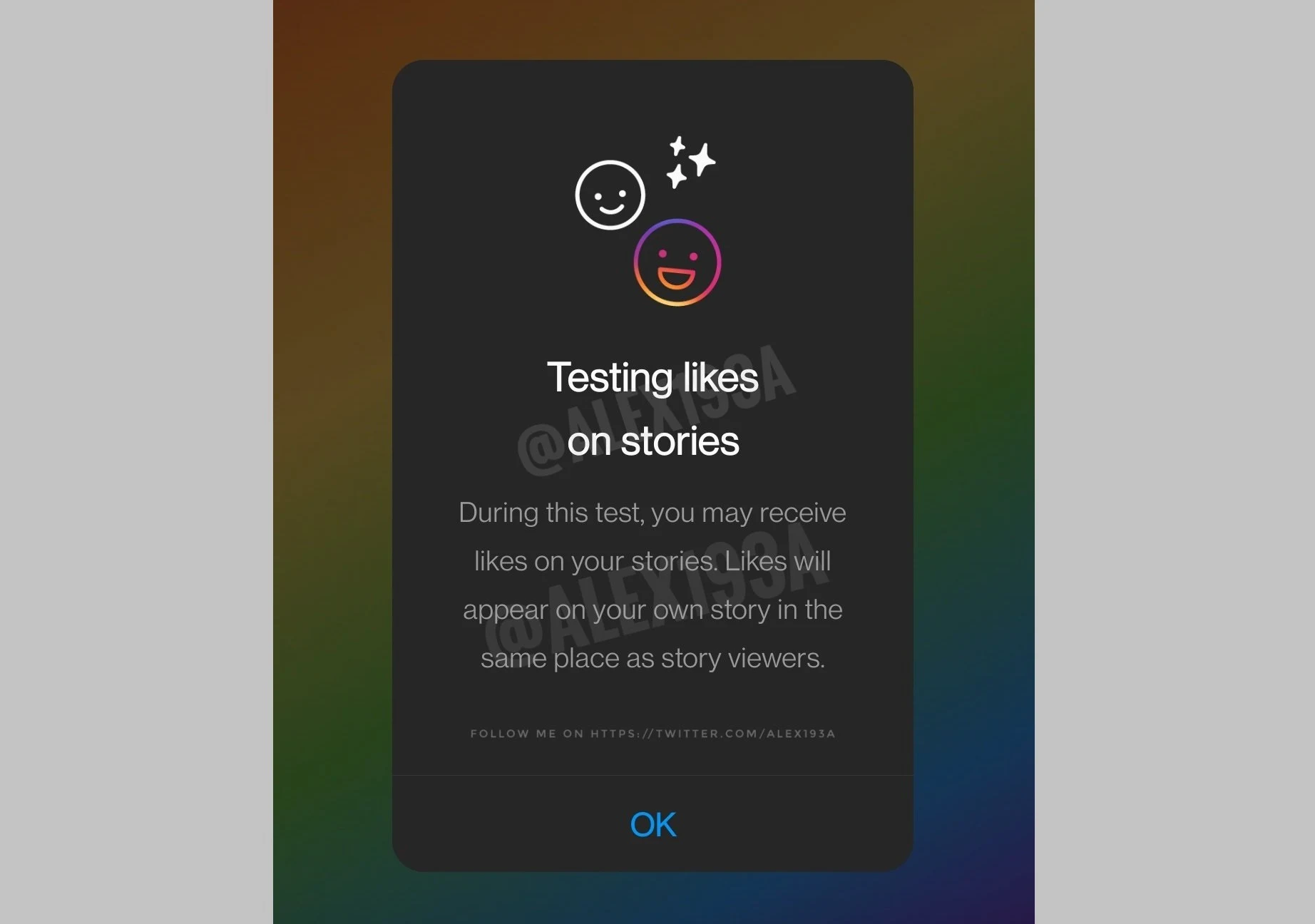Instagram is testing the addition of a like reaction to Stories on the platform, taking a leaf out of Facebook's, well, book.
Facebook is very much synonymous with the like button. The blue colored thumbs up emoticon is perhaps one of the most iconic images associated with the social network, with the only other potential competition being the "F" logo. The same, however, does not apply across the board. Instagram and WhatsApp, Facebook's major sister platforms, already had a set of fleshed out images from being their own independent sites before being acquired by CEO Mark Zuckerberg. The like button is a symbol that doesn't resonate as well with them as it does with Facebook.
Then again, at the end of the day, a like button is no inscrutable symbol that requires this much thought. It's a thumbs up button, and Instagram already has those. More importantly, the ability to react to a post is old news for Instagram. While not necessarily with a like button, individual stories can be reacted to via a few different emojis that help accentuate the exact mood that you're trying to convey. Stories are a big part of Instagram (thanks, Snapchat), arguably more so than they are of Facebook and WhatsApp. The ability to react to different posts with a myriad of different reactions only adds to the Instagram experience.
This recent development of Instagram testing likes on Stories comes via a screenshot from social media apps researcher Alessandro Paluzzi. There's not much accompanying information, just that the platform's currently testing the feature out through limited accounts, and informing them of this via a pop-up notification once the app is opened. Typical beta testing procedure, as readers must be well aware of. At any rate, the addition of a like button as a form of reaction is honestly, rather underwhelming to this author. Nowadays, likes register more as neutral acknowledgements than they do a proper, positive reaction to something. This is especially prevalent over chat-heavy apps such as WhatsApp, where the thumbs up button is most commonly used as a way to acknowledge a sent message, and nothing else. Kind of boring, to be honest.
The feature's addition isn't particularly interesting. In fact, this would almost feel like a step backward, if not for the fact that the addition of a like button won't really affect the status quo. Users just won't make use of it.
Read next: Instagram plans to rebrand its IGTV to ‘Instagram TV’ very soon
Facebook is very much synonymous with the like button. The blue colored thumbs up emoticon is perhaps one of the most iconic images associated with the social network, with the only other potential competition being the "F" logo. The same, however, does not apply across the board. Instagram and WhatsApp, Facebook's major sister platforms, already had a set of fleshed out images from being their own independent sites before being acquired by CEO Mark Zuckerberg. The like button is a symbol that doesn't resonate as well with them as it does with Facebook.
Then again, at the end of the day, a like button is no inscrutable symbol that requires this much thought. It's a thumbs up button, and Instagram already has those. More importantly, the ability to react to a post is old news for Instagram. While not necessarily with a like button, individual stories can be reacted to via a few different emojis that help accentuate the exact mood that you're trying to convey. Stories are a big part of Instagram (thanks, Snapchat), arguably more so than they are of Facebook and WhatsApp. The ability to react to different posts with a myriad of different reactions only adds to the Instagram experience.
This recent development of Instagram testing likes on Stories comes via a screenshot from social media apps researcher Alessandro Paluzzi. There's not much accompanying information, just that the platform's currently testing the feature out through limited accounts, and informing them of this via a pop-up notification once the app is opened. Typical beta testing procedure, as readers must be well aware of. At any rate, the addition of a like button as a form of reaction is honestly, rather underwhelming to this author. Nowadays, likes register more as neutral acknowledgements than they do a proper, positive reaction to something. This is especially prevalent over chat-heavy apps such as WhatsApp, where the thumbs up button is most commonly used as a way to acknowledge a sent message, and nothing else. Kind of boring, to be honest.
The feature's addition isn't particularly interesting. In fact, this would almost feel like a step backward, if not for the fact that the addition of a like button won't really affect the status quo. Users just won't make use of it.
Read next: Instagram plans to rebrand its IGTV to ‘Instagram TV’ very soon

